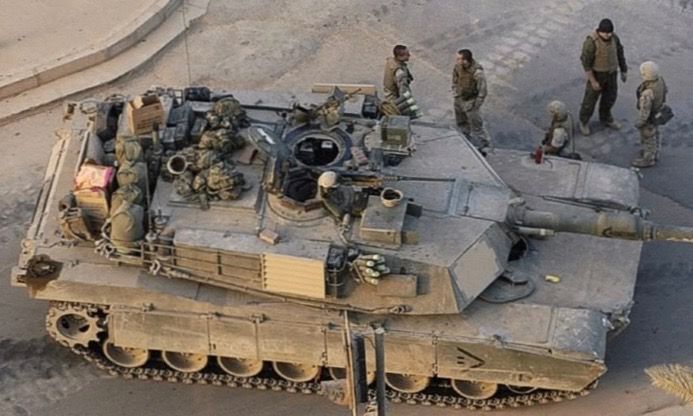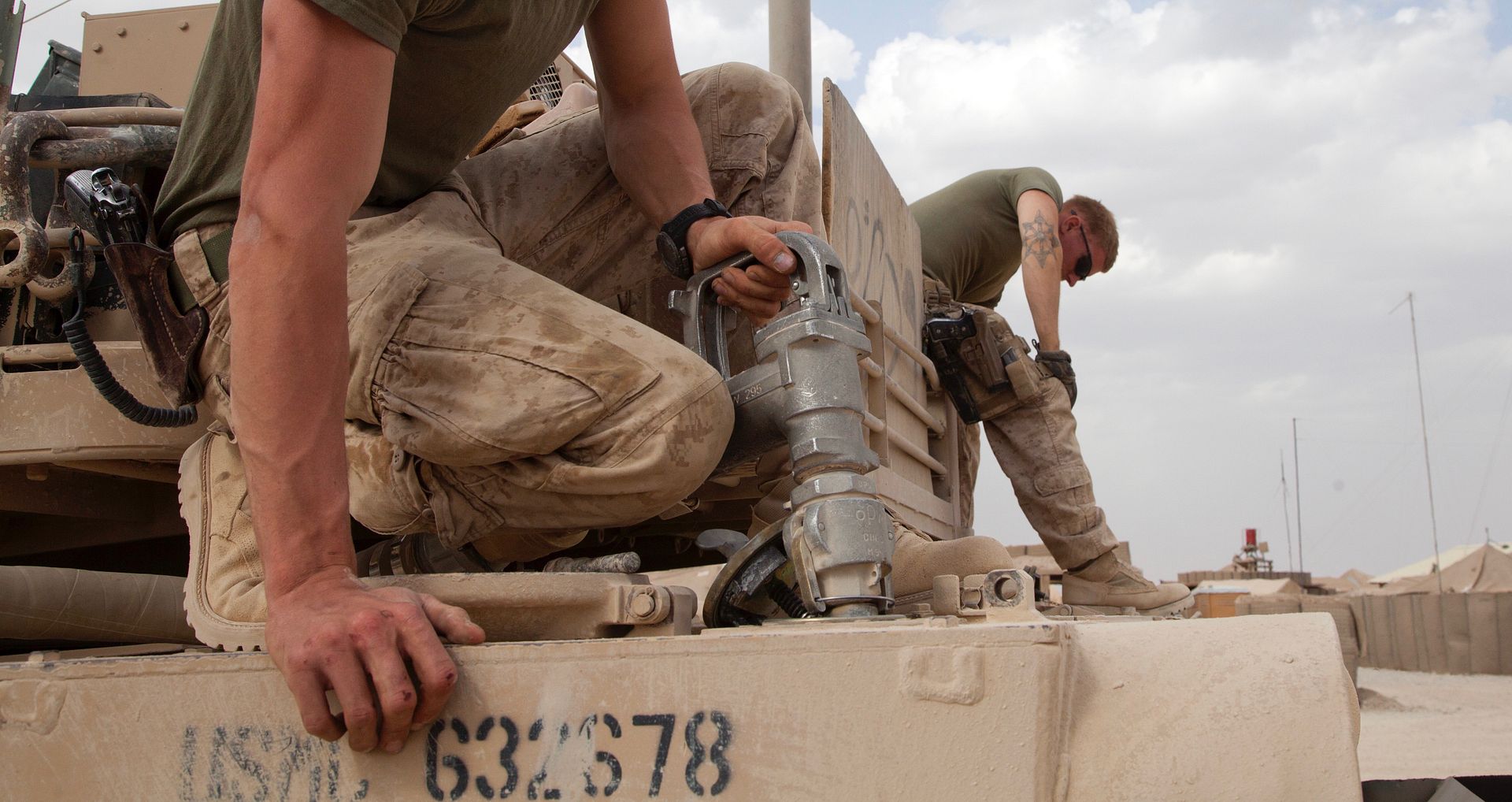Page 22 of 24
Re: Another Abrams
Posted: Mon Oct 26, 2015 4:19 pm
by Ad Lav
There's going to be an influx of chally 2's that's for sure!!
Re: Another Abrams
Posted: Mon Oct 26, 2015 4:20 pm
by Ad Lav
Next time you take a trip to hobbybox let me know

Re: Another Abrams
Posted: Mon Oct 26, 2015 6:02 pm
by DNAR
scalawag wrote:I have 5 wwII tanks which are all set up for battling already too. Maybe if a few of us get into the modern stuff then we could consider having the odd modern themed battle. With the Chally 2 coming and possibly a T90 at some point there are bound to be more MBTs in the club before long mate.

Can't wait for the Chally! Hopefully by mid November I will have my hands on this.
Re: Another Abrams
Posted: Wed Oct 28, 2015 1:14 am
by atcttge
Someone I think did the same with a Leo2 but it also didn't work out. Another one also used the Tamiya gun stabilizer and it also didn't work out. IIRC, in both instances, the gun could not keep up with the tank, and so it always was delayed in keeping on the target.
Re: Another Abrams
Posted: Wed Oct 28, 2015 2:18 pm
by greengiant
Its to bad that the stab seems unusable

. I doubt that anything small enough to fit in a 1/16 scale tank could be cobbled together that could keep up with the tanks movements in any way that match the real things speed but something that would work at slower speeds and run smoothly would still be pretty neat

.
Re: Another Abrams
Posted: Mon Nov 02, 2015 4:48 pm
by toniolillo
Hello, I really like how you've changed the rotation and elevation by servos , could you explain how you have placed the servo to the muzzle , thanks
Re: Another Abrams
Posted: Wed Nov 04, 2015 11:42 am
by DNAR
scalawag wrote:greengiant wrote:I doubt jet fuel would leave any stain if some dripped. Would probably leave clean spots before it evaporated with no residue left to collect dirt.
Very true greengiant, good point.

Curious about the fuel spills on the Abrams. Most of the pictures we see are a very clean and absent of fuel spill. However there are evidence that fuel spill can happen and will get this area very soiled up so you have the option to heavily weather this. At the same time as modern tanks can get heavily "weathered" (in scale modelling) or heavily used as in the heat of a battle or campaign wherein cleaning your tank would be least of your priority.
With regards to jet fuel, this depends what type is used (military grade, civilian etc.), the temperature, the way the spill happened(high altitude, atomised, direct spill, spray etc..), amount, environmental condition, the way the fuel was handled, expertise on fuel handling, emergency scenario, on the heat of battle etc. All of this can influence the fuel spill and the rate it will react or interact to the surrounding (dirt, mud, oil etc) and can cause grime around the fuel port.
The rate of jet fuel evaporation depends on the type, temperature, mechanism of the spill, amount etc. If the fuel is atomise such as aircraft dumping fuel at a high altitude then it will evaporate quickly as compared to dumping it close to the ground with less time to dissipate or atomise. So in a spill like lets say refuelling the Abrams, and the crew carelessly spill a good amount or a pool of jet fuel it will take time for it to evaporate ( in the afternoon or evening) then more time to react to the surroundings such as sand and dirt that already accumulates in the fuel port. Its not all clean at the same time having jet fuel (volatile/rate of evaporation) will not totally mean you can avoid fuel spill and grime on an Abram's fuel port. At the end its up to the modeller to recreate what he wants to simulate, but with a good understanding about the interaction why that happened will help make it more plausible.
Here is a picture to prove that jet fuel leaves a stain/grime on a USMC Abrams. Crew might not have time to clean up spills on the heat of battle or campaign.

Here is the fuel receptacle used to cleanly connect while re-fueling to prevent spills. Obviously if you used a jet fuel placed in a container then there is high chance of spillage.

Re: Another Abrams
Posted: Wed Nov 04, 2015 2:25 pm
by greengiant
Wouldn't consider that a perminent stain per se as it just appears the fuel has not evaporated yet. Diesel fuel would leave such a stain that would virtually never evaporate and hold onto whatever lands on it until washed off.
Still its a good point that jet fuel could be modeled as a stain as if the tank was recently sloppily refueled. You will find very few pictures such as the one you show because the jet fuel evaporates very clean leaving little or nothing behind and whatever did stick to it when wet just falling or being blown off.
Re: Another Abrams
Posted: Wed Nov 04, 2015 4:49 pm
by DNAR
Fuel stains on Abrams is possible and thats that. Crew can clean it or refuel it carefully to avoid soiling the area. I have couple of personal pictures that even shows mild rusting or oxidation on the fuel port.
Honeywell AGT 1500 turbine engine is multi fuel. It can use diesel fuel and gasoline. Some mentioned even marine diesel but could not confirmed this. Of course it has its specific fuel designed for it ( I will ask experts on this ) but its possible to leave stains there. We also need to be aware that this area is highly cleaned and maintain properly (not during operation or campaign) to avoid soiling the fuel in the first place.
Added :
http://www51.honeywell.com/aero/common/ ... nology.pdf
So it can used Marine Diesel Fuel!
Re: Another Abrams
Posted: Wed Nov 04, 2015 5:09 pm
by DNAR
Confirmed from my tanker friend. From Iraq and Afghanistan. They said it "cakes" when spill mixed up with fine dust. They clean the fuelling port extensively to prevent this, thats why there are few spills on the surface and its not because of evaporation. In-fact literature and on ground experience says the opposite (Diesel-like, oily and stains).
He said fuel used by US Army is JP8 (Jet Propellant eight) "similar" to diesel and pretty oily and does not evaporate quickly. He confirms that it leaves an oily residue. It is Jet fuel (Kerosine base).
Taken from Wiki..
JP-8 is formulated with an icing inhibitor, corrosion inhibitors, lubricants, and antistatic agents, and less benzene (a carcinogen) and less n-hexane (a neurotoxin) than JP-4. However, it also smells stronger than JP-4. JP-8 has an oily feel to the touch, while JP-4 feels more like a solvent.
Workers have complained of smelling and tasting JP-8 for hours after exposure. As JP-8 is less volatile than standard diesel fuel, it remains on the contaminated surfaces for longer time, increasing the risk of exposure.
Paul mate, sorry for the off topic. Its just useful information to help modellers and be guided.

